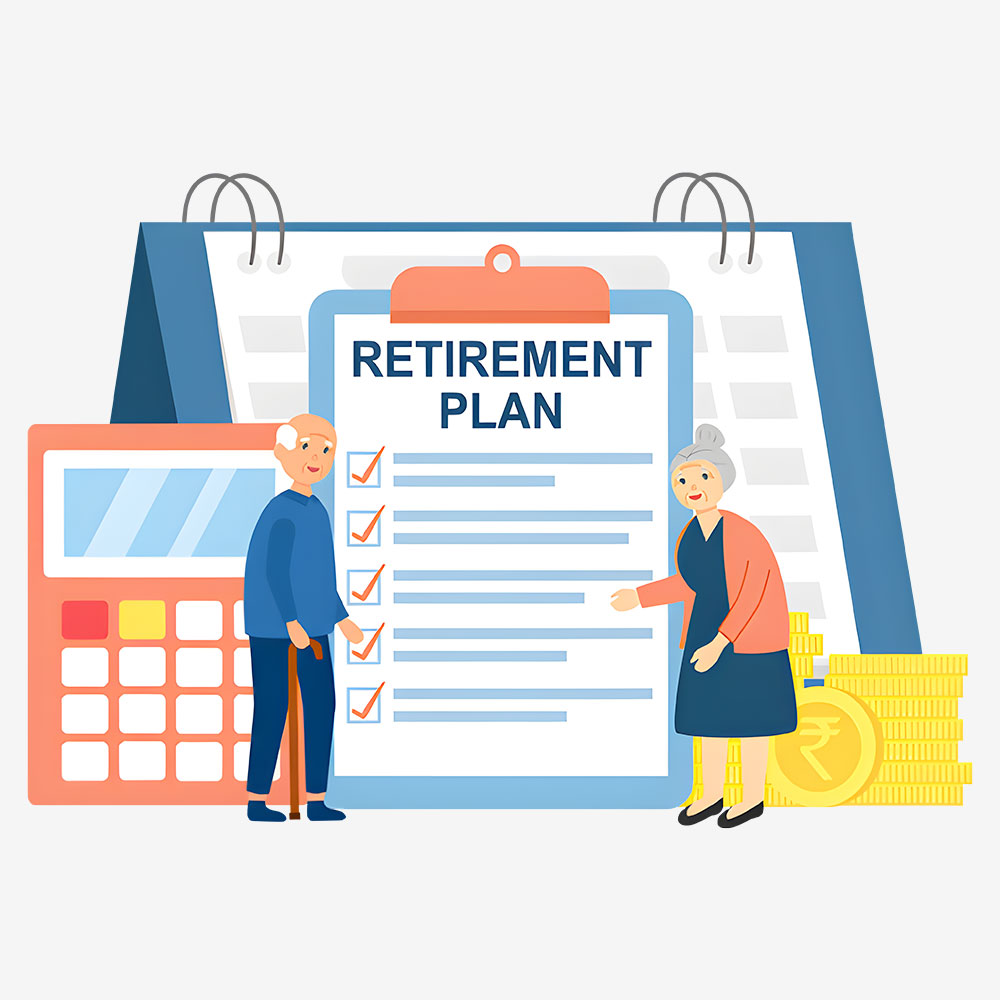Friday, May 2 2025
Source/Contribution by : NJ Publications
We've all been guilty of it-pushing retirement planning to the back burner. "Retirement? That's decades away!" we tell ourselves, all while fantasizing about leisurely mornings and exotic vacations. While retirement is one of life's certainties, it remains one of the most overlooked aspects of investment.
We plan for all important events of life - be it buying a home, planning for kids marriage, but fail to plan for this most challenging part of our life-stage. As the saying goes, "Failing to plan is planning to fail." It's easy to get lost in the daily grind. Mortgages, kids' tuition, that urgent car repair - they all demand immediate attention. Retirement? Well, that's a problem for "future me." We operate under the illusion that time is an infinite resource, an endless buffet we can sample at our leisure.
According to the India Retirement Index Study (IRIS), conducted by Max Life Insurance in partnership with KANTAR, 44% of Indians believe the ideal age to start retirement planning is before 35. However, alarmingly, nearly two in five have yet to begin.
Procrastination is a retirement killer. The earlier you start, the less you have to save each month. The power of compounding makes time your biggest ally. As Albert Einstein once said, "Compound interest is the eighth wonder of the world. He who understands it, earns it; he who doesn't, pays it."
Why Retirement Planning is Essential?
Below factors converge to make it indispensable:
-
Declining Interest Rates: Fixed-income products once offered attractive returns of 12-13%. These rates have significantly dropped and are expected to decline further.
-
Increased Longevity: Medical advancements have extended life expectancy, meaning your retirement funds must last longer.
-
Rising Aspirations: Retirement is no longer just about survival. People want to pursue dreams, travel, and enjoy hobbies they couldn't during their working years.
-
Changing Family Structures: With urbanization and the rise of nuclear families, financial independence is more critical than ever, as children often live separately from their parents.
-
Escalating Healthcare Costs: Medical expenses continue to rise, making it imperative to have adequate savings.
-
Impact of Inflation: Inflation erodes purchasing power. In India, with an average assumed inflation rate of 7%, a monthly expense of ₹25,000 could balloon to around ₹1 lakh in 20 years and nearly ₹2 lakhs in 30 years.
Calculating Your Retirement Nest Egg
We all would like to have a happy retired life, but without quantifying the same in financial terms the definition of 'HAPPY Retired Life' remains very vague. The key question is: How much should your retirement corpus be? While there's no one-size-fits-all answer, you can estimate your retirement fund by considering:
-
The age at which you plan to retire
-
Your current lifestyle and monthly expenses
-
Expected rate of return on investments during your working and retired life
-
Inflation rate over time
-
Existing retirement savings (e.g., provident funds, pension plans, insurance policies)
-
Any specific hobby you want to pursue during retirement
(Note: This list is illustrative. Consult a mutual fund distributor for personalized guidance.)
After quantifying these factors, you can calculate your target retirement corpus and the necessary investment strategy. According to the IRIS 4.0 study, 57% of Indians fear their retirement savings will run out within 10 years, with 30% worried about depleting their funds in just 5 years. A well-structured retirement plan ensures that your corpus sustains you throughout your post-retirement years, growing with inflation.
Regular Reviews and Adjustments
Retirement planning is not a static exercise. It requires ongoing adjustments to reflect life's evolving circumstances:
-
Job promotions or salary hikes (increase contributions accordingly)
-
Major life changes (marriage, childbirth, etc.)
-
Tax law modifications
-
Receiving an inheritance or windfall gain
Retirement Planning Strategies
Various options exist to build your retirement portfolio:
-
Insurance products designed for retirement.
-
Systematic Investment Plans (SIPs) in equity mutual funds.
-
Pension plans.
-
Employer-sponsored retirement benefits.
-
Creating income producing assets like rental properties or farmland.
Given the long-term nature of retirement planning, equity investments, particularly through SIPs, offer the potential for substantial growth, leveraging the power of compounding. However, diversification is crucial to manage risk.
Conclusion: The Best Time to Start is Now
Retirement planning is a continuous, long-term commitment. Don't wait for the 'perfect' moment, as it rarely arrives. Procrastination is the enemy of a comfortable retirement. Begin building your financial future today, and truly enjoy the fruits of your labour.







